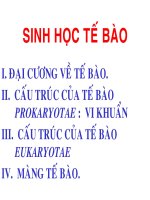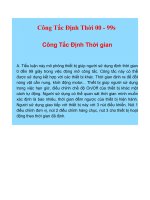C406 00
Bạn đang xem bản rút gọn của tài liệu. Xem và tải ngay bản đầy đủ của tài liệu tại đây (11.81 KB, 2 trang )
Designation: C 406 – 00
Standard Specification for
Roofing Slate1
This standard is issued under the fixed designation C 406; the number immediately following the designation indicates the year of
original adoption or, in the case of revision, the year of last revision. A number in parentheses indicates the year of last reapproval. A
superscript epsilon (e) indicates an editorial change since the last revision or reapproval.
TABLE 1 Physical Requirements
1. Scope
1.1 This specification covers the material characteristics,
physical requirements, and sampling appropriate to the selection of slate for use as roof shingles.
1.2 Slates not included in this specification are those containing soft carbonaceous ribbons. The wide variation in
physical properties and composition of such ribbon slates
render their service life uncertain under some conditions of
use.
A
B
C
2. Referenced Documents
2.1 ASTM Standards:
C 119 Terminology Relating to Dimension Stone2
C 120 Methods of Flexure Testing of Slate (Modulus of
Rupture, Modulus of Elasticity)2
C 121 Test Method for Water Absorption of Slate2
C 217 Test Method for Weather Resistance of Slate2
Classification
Modulus of
Rupture
Across the
Grain, min,
psi (MPa)A
Absorption, max,
%B
Depth of
Softening, max,
in. (mm)C
Grade S1
Grade S2
Grade S3
9000 (62)
9000 (62)
9000 (62)
0.25
0.36
0.45
0.002 (0.05)
0.008 (0.20)
0.014 (0.36)
See Methods C 120.
See Test Method C 121.
See Test Method C 217.
Grade
Grade S1
Grade S2
Grade S3
Service Life (years)
over 75
40 to 75
20 to 40
5. Ordering Information
5.1 Color—The following color nomenclature is commonly
used:
3. Terminology
3.1 Definitions—Definitions shall be in accordance with
Terminology C 119.
3.2 Definitions of Terms Specific to This Standard:
3.2.1 service life—a period of time over which the slate
material is expected to require no repair or replacement due to
weathering.
3.2.2 ribbons—narrow bands of carbonaceous material,
darker in color than the surrounding slate. These ribbons are
inclusions of the original beds and are softer and less durable
than the surrounding material.
Black
Blue black
Gray
Blue gray
Purple
Mottled purple and green
Green
Purple variegated
Red
Weathering green (changes to buff or brown)
5.2 Standard Roofs—Sloping roofs utilizing a nominal
thickness of 3⁄16 to 1⁄4 in. (4.8 to 6.4 mm), are known as
standard roofs. These shingles shall be rectangular unless
otherwise specified. These shingles shall be machine punched
or drilled for two nails located for proper headlap.
5.3 Textural Roofs—Sloping roofs utilizing various sizes,
thicknesses, textures, and colors for architectural effects, are
known as textural roofs. These shingles shall be machine
punched or drilled for two nails located for proper headlap.
5.4 Graduated Roofs—Sloping roofs utilizing a greater
range of sizes, thicknesses, and exposed lengths of shingles,
are known as graduated roofs. The slates are arranged on the
roof so that the thickest and longest occur at the eaves and
gradually diminish in size and thickness toward the ridges.
These shingles shall be machine punched or drilled for two
nails located for proper headlap.
4. Classification
4.1 Roofing slate shall be classified by grade in accordance
with the physical requirements of Table 1.
4.2 Expected service life of the various grades, depending
on geographic location and environmental exposure, is as
follows:
1
This specification is under the jurisdiction of ASTM Committee C-18 on
Dimension Stone and is the direct responsibility of Subcommittee C18.03 on
Material Specifications.
Current edition approved April 10, 2000. Published June 2000. Originally
published as C 406 – 57 T. Last previous edition C 406 – 89 (1996).
2
Annual Book of ASTM Standards, Vol 04.07.
6. Physical Requirements
6.1 Slate supplied under this specification shall conform to
the physical requirements listed in Table 1.
6.2 Slates with broken corners on the exposed ends shall not
be installed when either the base or leg of the right triangular
piece broken off is greater than 11⁄2in. (38.1 mm). Slates with
Copyright © ASTM, 100 Barr Harbor Drive, West Conshohocken, PA 19428-2959, United States.
1
C 406
broken corners are acceptable for cutting stock.
6.3 The curvature of shingles shall not exceed 1⁄8 in. in 12 in.
(1 mm in 100 mm). Curved slate shall be sheared and punched
to permit it to be laid with the convex side up.
6.4 “Knots” and “knurls” are rounded defects, which affect
the smoothness of split. They are acceptable on the exposed
portion of the top face but on other parts will prevent close
contact of shingles. Shingles having knots or knurls on the
covered portions projecting in excess of 1⁄16 in. (1.6 mm) shall
not be used, if they prevent proper fit and contact.
6.5 Slate shall be free from ribbons.
6.6 Not more than 1 % of broken slates, including those
having cracks materially precluding ringing when sounded,
shall be accepted.
6.7 Face dimensions shall not differ from those specified by
more than 1⁄8 in. (3.2 mm).
7. Sampling
7.1 Samples for testing of characteristics and physical
properties, if required, shall be representative of the slate to be
used.
The American Society for Testing and Materials takes no position respecting the validity of any patent rights asserted in connection
with any item mentioned in this standard. Users of this standard are expressly advised that determination of the validity of any such
patent rights, and the risk of infringement of such rights, are entirely their own responsibility.
This standard is subject to revision at any time by the responsible technical committee and must be reviewed every five years and
if not revised, either reapproved or withdrawn. Your comments are invited either for revision of this standard or for additional standards
and should be addressed to ASTM Headquarters. Your comments will receive careful consideration at a meeting of the responsible
technical committee, which you may attend. If you feel that your comments have not received a fair hearing you should make your
views known to the ASTM Committee on Standards, at the address shown below.
This standard is copyrighted by ASTM, 100 Barr Harbor Drive, PO Box C700, West Conshohocken, PA 19428-2959, United States.
Individual reprints (single or multiple copies) of this standard may be obtained by contacting ASTM at the above address or at
610-832-9585 (phone), 610-832-9555 (fax), or (e-mail); or through the ASTM website (www.astm.org).
2









